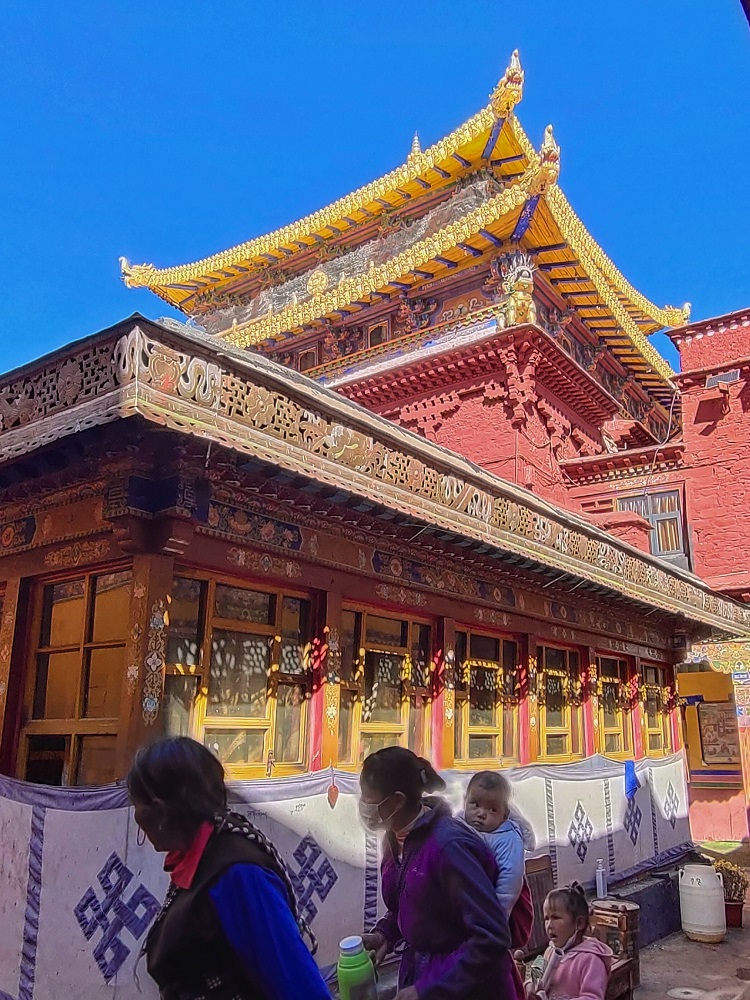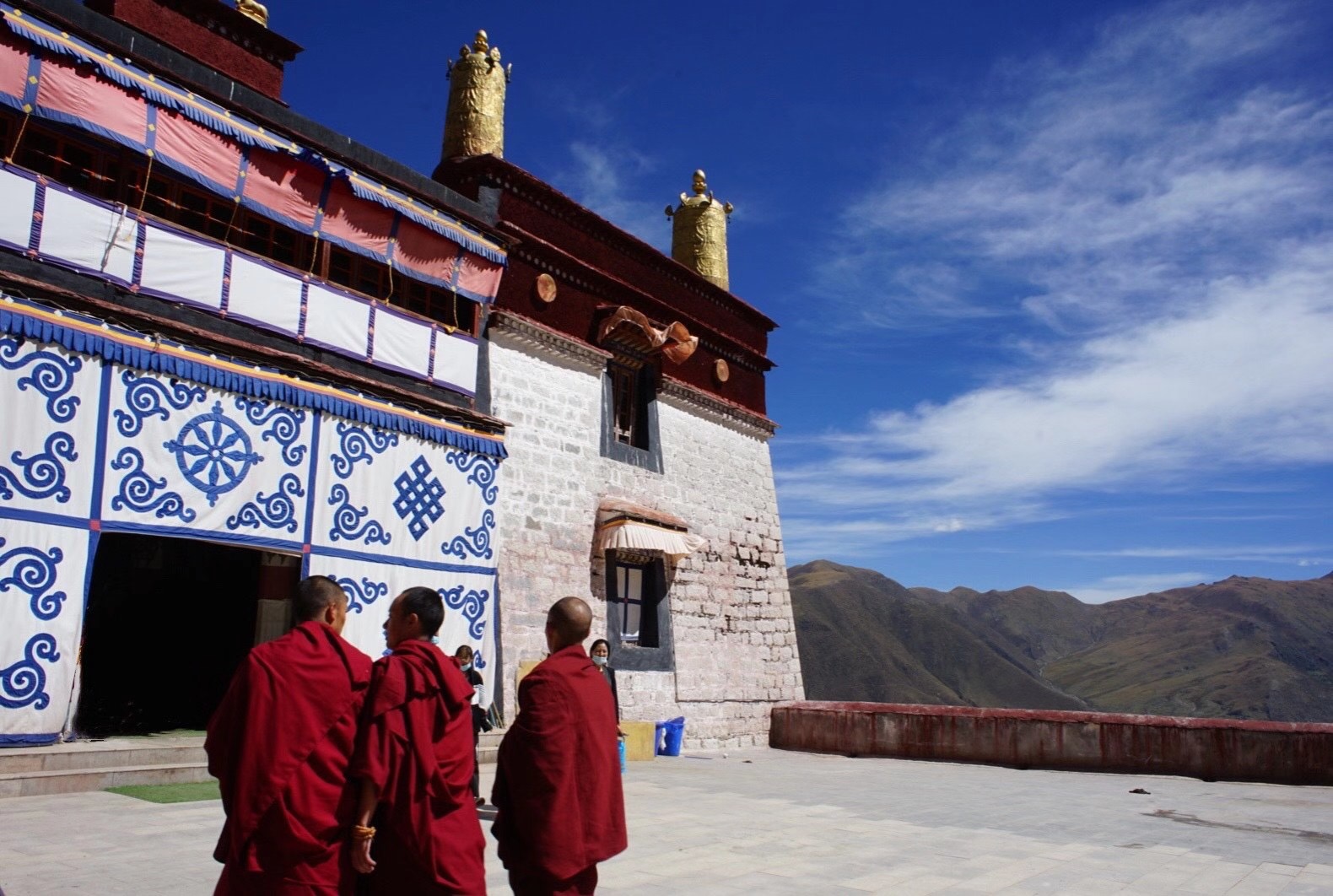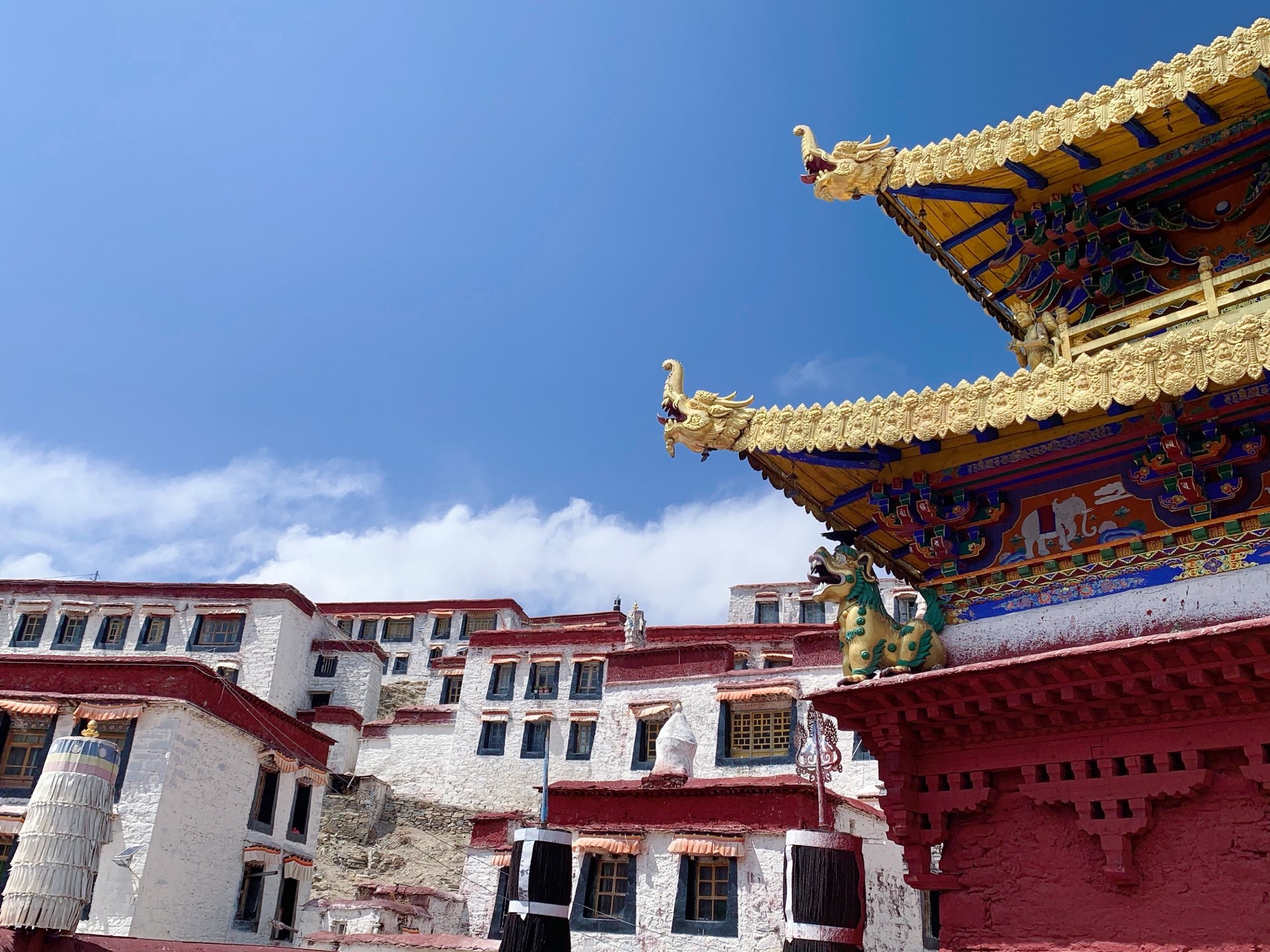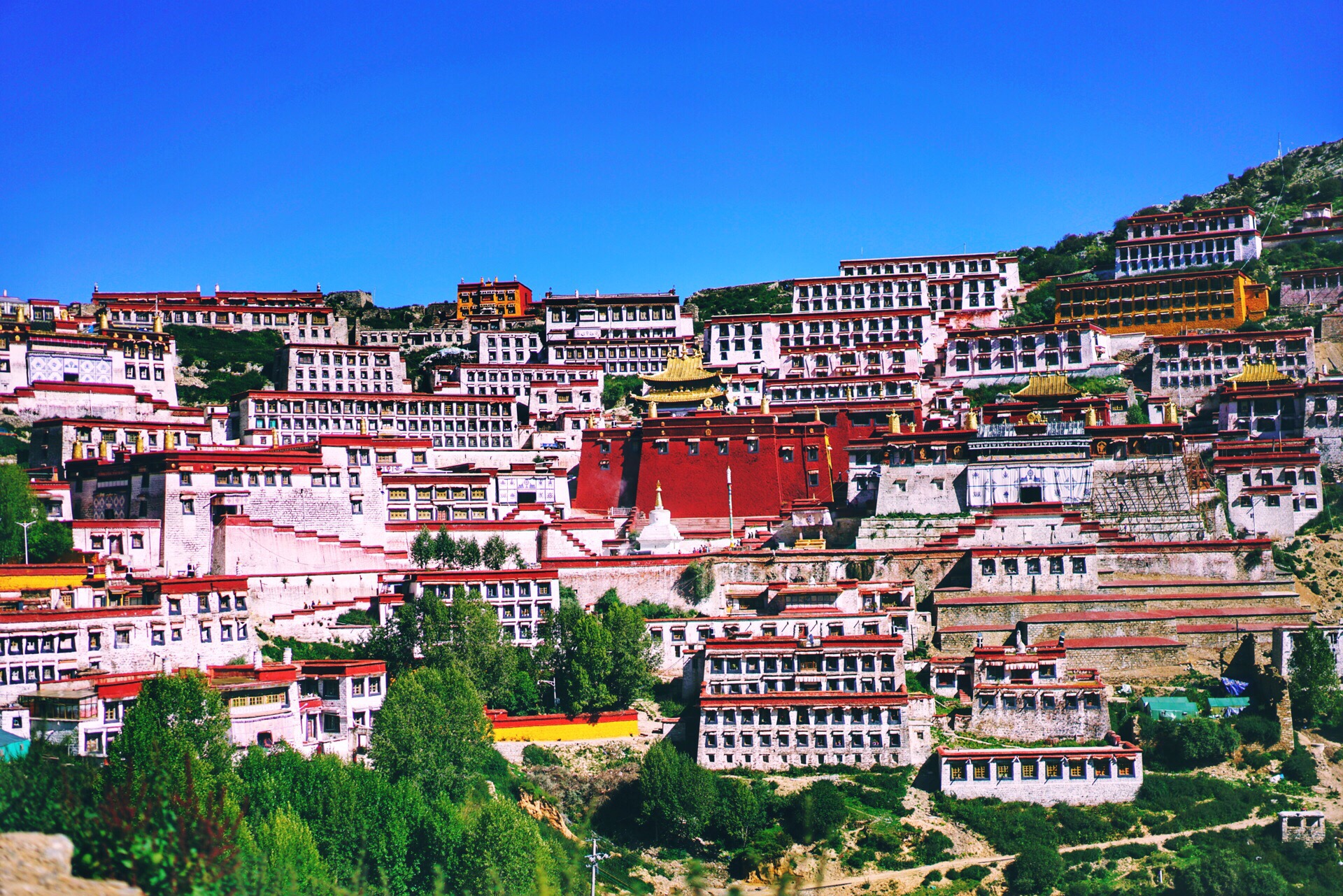
Ganden Monastery
- Chinese name: 甘丹寺
- Location: Dazi District, more than 40 kilometers east of Lhasa City
- Location: 拉萨市区东面40余公里的达孜区境内
- Times: Early Ming Dynasty to Qing Dynasty
- Area: about 30000 m²
- Protection level: the first batch of national key cultural relics protection units
- Opening hours: 9:00~16:00.
- Established time: Ming Yongle 7th year (1409)
- Altitude: 3800 meters.
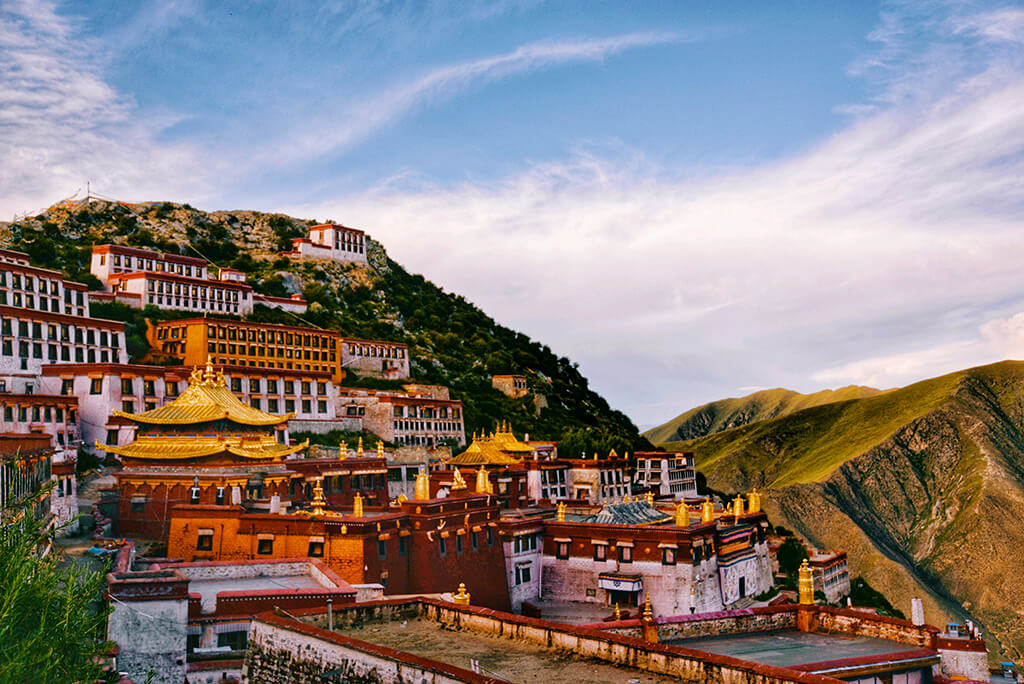
Ganden Monastery
Gandan Monastery is located in the Dazi District, more than 40 kilometers east of Lhasa City, on the Wangpol Mountain Pass on the south bank of the Lhasa River, with an altitude of 3800 meters. It was built in the seventh year of Yongle in the Ming Dynasty (1409) and was destroyed during the Cultural Revolution. Since 1980, the People’s Government of the Tibet Autonomous Region has allocated funds for restoration.
The ancestral temple of the Lu sect of Gadan Monastery, together with Drepung Monastery and Sera Monastery, is known as the “three major monasteries” in Lhasa, and is one of the six major monasteries of the Yellow Sect
The total construction area of the Gadan Monastery is about 30,000 square meters. It has three halls including the Cuoqin Hall, Tsongkhapa Hall, Sheep Eight Sutra Temple, Tsongkhabar Lingta Hall, and two dhartsang, Xiazi and Jiangzi. (Scriptures College), below Dhacang is Kangcun, and some secret villages are set up below Kangcun. The construction of the Gadan Monastery marks that the Gelug sect has a fundamental dojo, and the Yellow Sect has been established on the basis of the “religious reform.”
Layout
Gandan Monastery is composed of more than 50 buildings, mainly including the Tsoqin Hall, Tsongkhapa Sleeping Hall, Yangbajian Sutra House, Tsongkhapa Lingta Temple, Jiangzi Zhacang, Xiazi Zhacang, 23 Kang villages, 20 It consists of rice villages. Among the 23 Kang villages, each Kang village has a scripture hall, most of which are two-story buildings built along the mountain, with layers on top of each other. From a distance, it occupies the entire half-mountain. The scale is grand and quite spectacular.
The Tsoqin Hall
The Tsoqin Hall (meaning the Great Sutra Hall, namely the Daxiong Hall) was built in 1409. It has 108 large pillars and can accommodate 3,300 monks to chant scriptures at the same time. The main offering in the hall is the future Buddha Jamba Buddha, and later added gilt and bronze Buddhas such as Tsongkhapa. In the hall, there is a seat carried by five golden lions, named “Gandan Shichi”, which is the seat after the establishment of the Yellow Sect by Tsongkhapa. There is a strange pillar in the main hall, which is a palm-thick distance from the ground. Those who go to Ganden Temple to worship the Buddha should touch the bottom of the pillar to pray for good luck.
Yangbajian Sutra Academy
On the left side of the Cuoqin Hall is the Yangbajian Sutra Academy, which is four floors high, and the top floor is the Tsongkhapa Lingta Temple, which is “Sedongkang”. It is said that 900 taels of silver were spent in casting, and the whole body of the pagoda is decorated with a large number of precious jewels, which is magnificent. The pagoda is covered with a yurt-shaped sandalwood tent, inside the tent is a curtain, and the top of the pagoda is covered with an umbrella, which is very gorgeous.
two major dratsangs
There are two major dratsangs in Ganden Monastery, Xiazi Dratsang and Jiangzi Dratsang. Jiangzi Zhacang (meaning “Northern Monastery”) is the sleeping hall of Ganden Chibak, and also his daily retreat. Xiazi Dratsang (meaning “East Top Monastery”) was built by Tsongkhapa personally handed down to Sherpa Rinqin Gyaltsen.
exquisite murals and sculptures
The murals and sculptures in each hall of Ganden Temple are exquisite, and there are many cultural relics treasured in the temple. Among them, in 1757, Emperor Qianlong of the Qing Dynasty bestowed the temple with armor inlaid with gold and silver jewels, written in four languages: Han, Man, Mongolia, and Tibetan, and a complete set of “Kanjur” in the Tibetan “Tripitaka” written by pure gold sweat. Buddhist scriptures, as well as many beautifully made silk “Thangkas”, Tsongkhapa’s Dharma seat and Zen bed when he passed away. There are 24 thangkas presented by Emperor Yongle of the Ming Dynasty, as well as cushions of Gushri Khan, all of which are rare treasures. All these are enough to show the long history and lofty religious status of Ganden Monastery. Among them, 24 thangkas are displayed to monks and believers every year for as long as three weeks, thus forming the annual “Gandan Embroidery Tang Festival”.
Ganden Monastery Video
Ganden Monastery Tourist Map
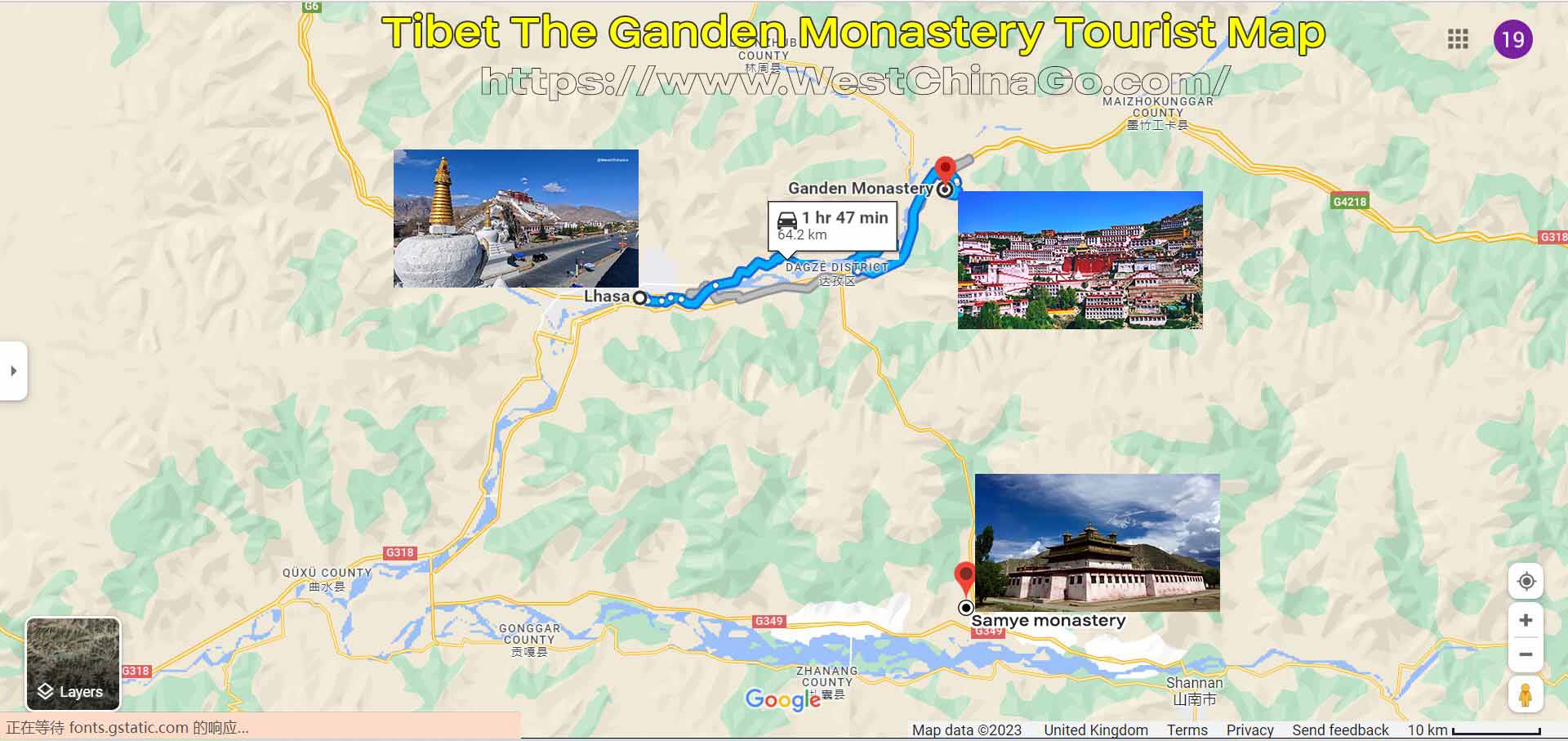
Ganden Monastery Photo
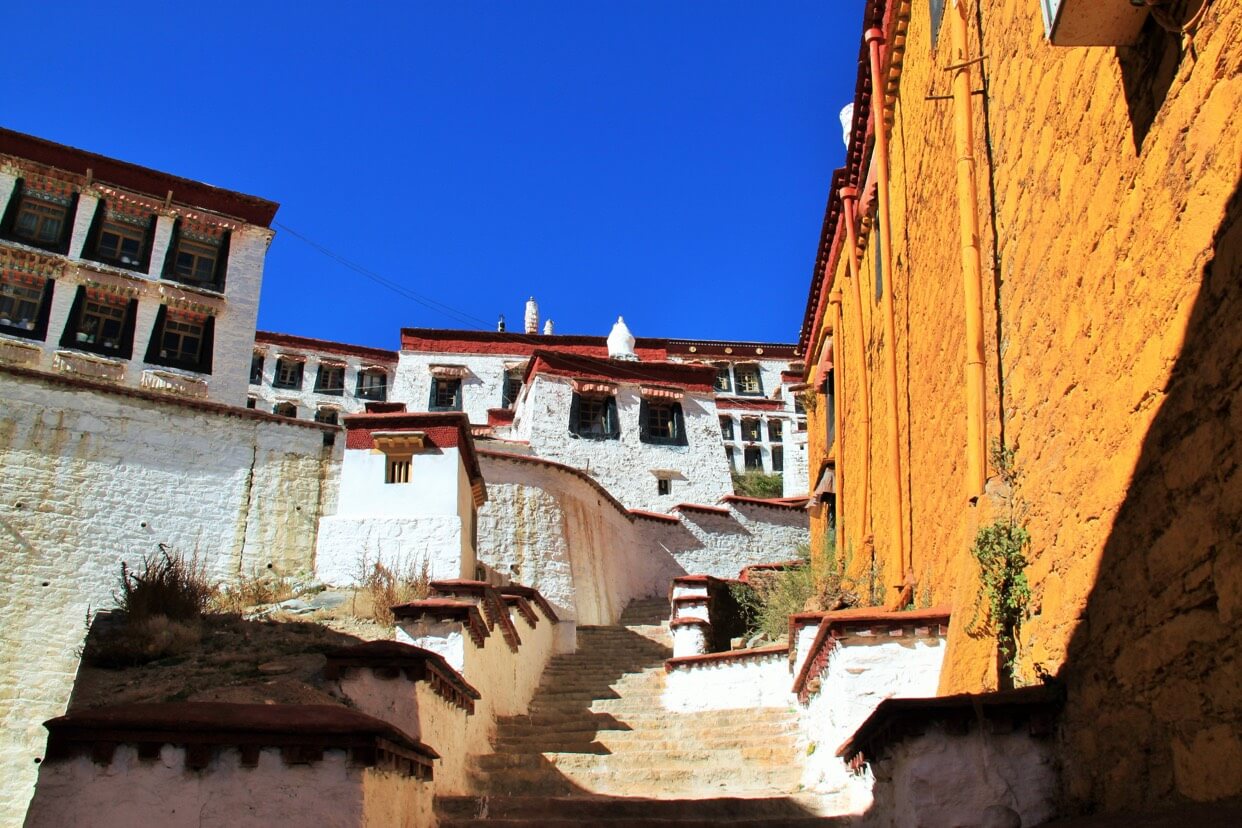
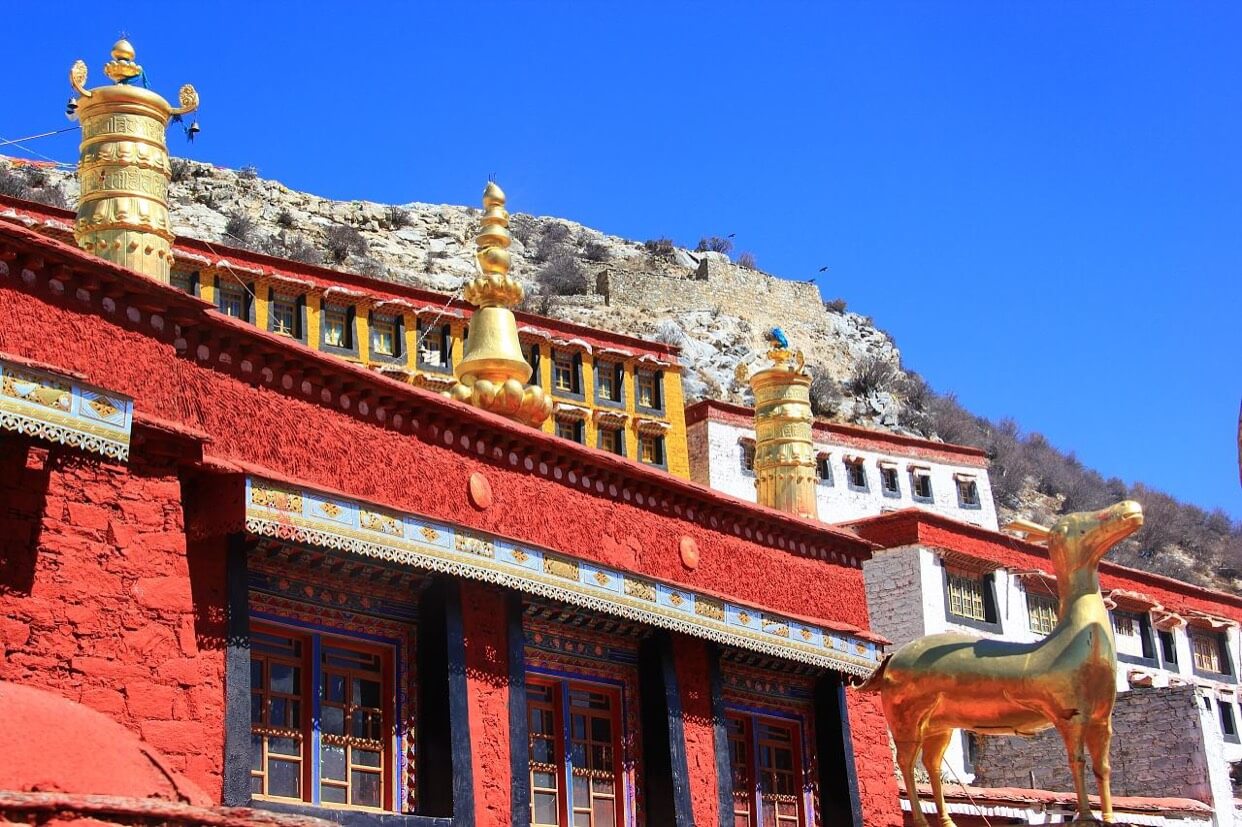
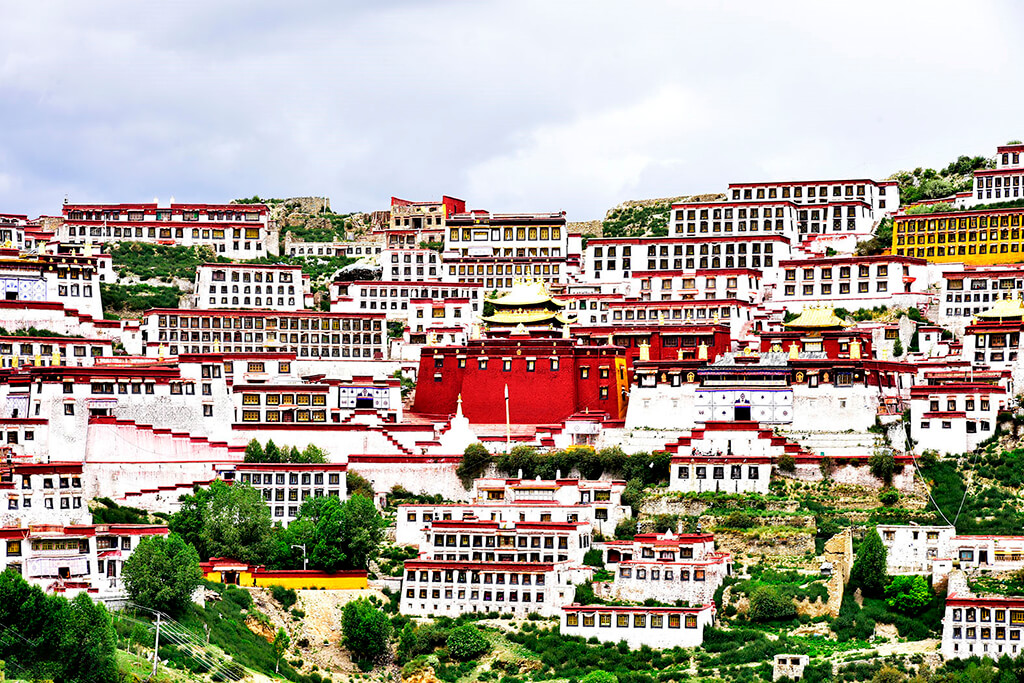
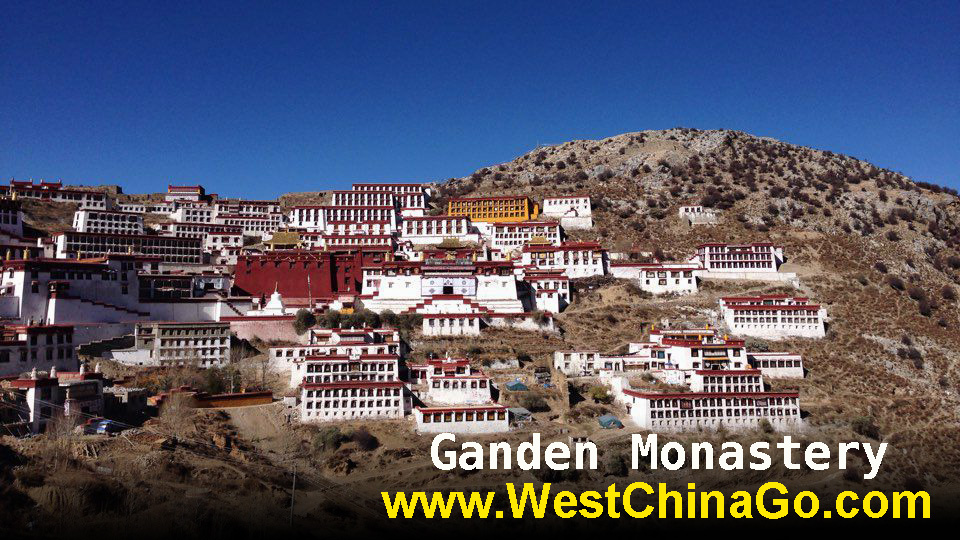
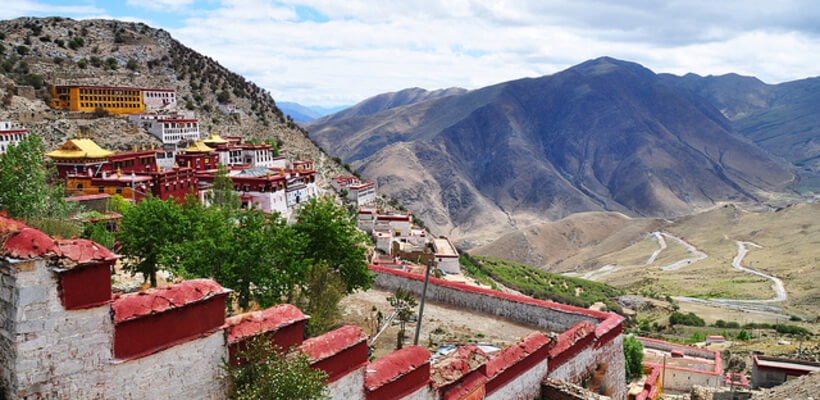
Ganden Monastery Travel Guide
In order to promote his religious reform movement, Tsongkhapa established his own Buddhist base as a place to train his disciples and promote the teachings. The construction of the Gadan Monastery marked that the Gelug Sect had a fundamental dojo, and the Huang Sect had been established on the basis of the “religious reform.”



